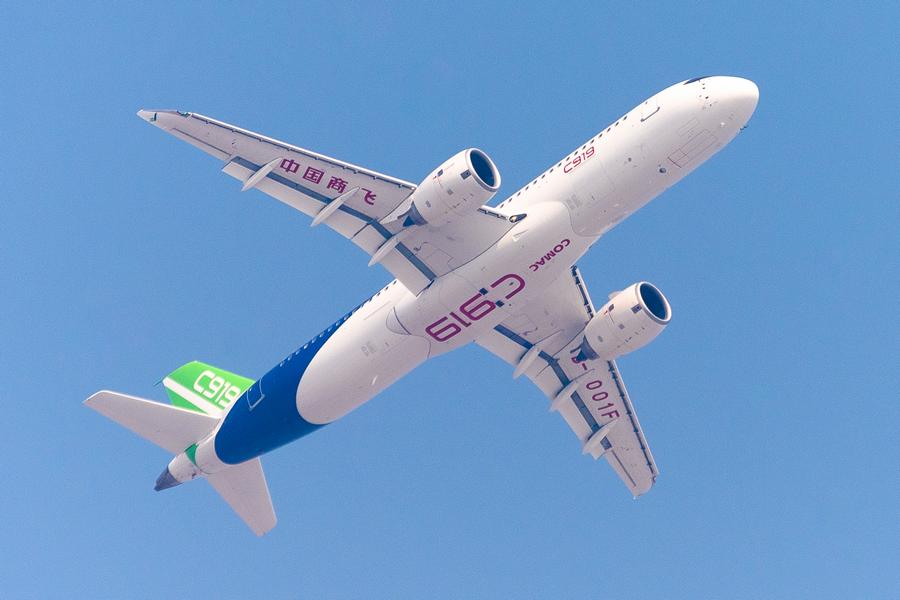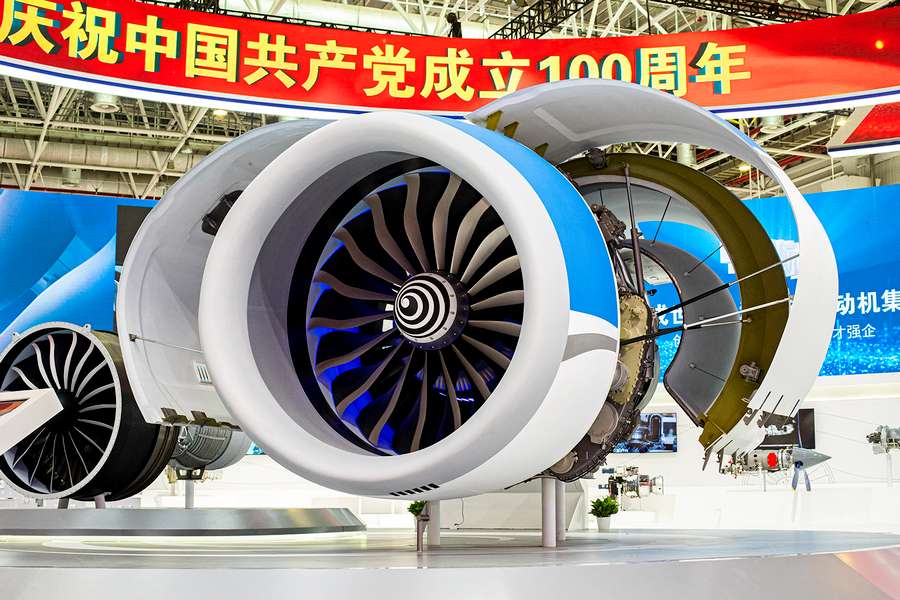Social media posts, plus a mysterious video, seem to show that a Chinese engine for the C919 single-aisle airliner has made its first flight.
After multiple delays before and during the pandemic, China’s COMAC C919 got its certification last autumn. The aircraft is very similar (some might say TOO similar) to an Airbus A320. The type is entering service with a pair of CFM LEAP-1C engines, which are quite similar to the LEAP-1A that CFM makes for the A320neo.

Since its official announcement in 2011, we have known that COMAC planned to give the C919 a second engine option. This would not only match the A320neo’s versatility of having two engine options, but it would also promote China’s own jet engine manufacturing. The designation of this Chinese engine is the ACAE CJ-1000A.
However, the development of this second engine for the C919 has been slow. Aviation analysts don’t expect this engine to enter service before the end of this decade. Nevertheless, the engine is perhaps the most difficult aircraft part that the Chinese aviation industry has to develop, to stop relying on foreign suppliers.
As congress debates TikTok, China flies its own commercial jet engine https://t.co/THtwJCf9rI (via @jonostrower) #staycurrent
— The Air Current (@theaircurrent) March 24, 2023
Chinese C919 Engine In the Air?
A recent video appears to show a version of the new engine flying under the wing of a Y-20 cargo aircraft, in use as a testbed. The Air Current, which reported on the story and archived the video, states that the date of the flight remains unknown. But the engine test clearly represents a major landmark for the evolution of the C919 as an indigenous Chinese airliner.
So far, COMAC doesn’t have any firm orders for the C919 from outside China. Analysts also doubt that China will be able to scale up production of the aircraft for some time to come. COMAC not only suffers from U.S. sanctions, but it is also subject to the same supply chain limitations as Airbus and Boeing. This is because the C919, the 737, and the A320 use parts from many of the same suppliers – beyond the LEAP engine.

But perhaps this is beside the point. It may be that China’s authorities don’t intend to scale up production of the C919 until the homegrown engine and other key parts are ready. It will be interesting to see how quickly the development of the CJ-1000A engine progresses. And how that development compares with the production numbers of the C919…
There are also plans for a larger version of the same engine, in the same thrust category as the GEnx, to power the CR929 widebody. A smaller version of the engine could power the very MD-90-like ARJ21 regional jet. But the emphasis will likely remain on developing the baseline C919 variant of the engine and successfully putting it into production.



